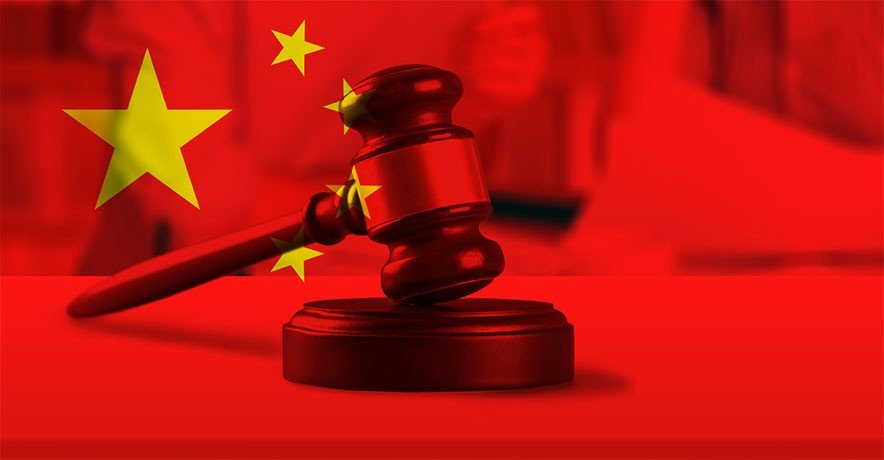China has officially implemented its highly anticipated law mandating clear labeling of AI-generated content, marking a significant shift in digital governance. First introduced in May 2025, the Measures for the Administration of Internet Information Services on the Labeling of Synthetic Content Generated by Artificial Intelligence came into force on 1st September, 2025. This regulation is part of China’s broader effort to regulate the growing presence of artificial intelligence in everyday digital interactions and to combat the rise of misinformation, deepfakes, and the general blurring of lines between human and machine-generated content.
As generative AI technologies such as text, image, and video synthesis tools become more sophisticated, concerns over their misuse have increased. In China, where digital media plays a central role in communication, commerce, and governance, authorities have been particularly vigilant about the risks of synthetic content being used to spread disinformation or manipulate public opinion. The government’s new law aims to promote transparency, build public trust, and ensure users can clearly identify when content is generated or manipulated by machines.
KEY REQUIREMENTS OF THE LAW
Under the new regulation, all Internet Information Service Providers (IISPs)—including social media platforms, news outlets, video-sharing services, and other online content providers—are now required to clearly label any AI-generated content they distribute. The law applies to a wide range of digital formats, including:
- Text-based content (news articles, social media posts)
- Images (photographs, digitally generated images)
- Audio content (voice synthesis, generated music)
- Videos (deepfakes, fully AI-generated video content)
- Virtual scenes and 3D content
The labeling must meet both explicit and implicit requirements:
- Explicit Labels: Clear and visible text tags such as “AI-generated content” must be attached directly to the content displayed to end-users. In some cases, watermarks are required on images and videos.
- Implicit Labels: Providers must embed metadata or digital watermarks that remain machine-readable but invisible to human viewers. These allow regulators and third parties to track and verify the origin of the content.
Content creators themselves must disclose when they are using AI tools, ensuring accountability throughout the content production process.
INDUSTRY AND PUBLIC RESPONSE
In response to the law, leading Chinese tech companies have updated their platforms to comply ahead of the deadline. For example:
- WeChat and Weibo have introduced automatic detection systems that identify AI-generated posts and apply appropriate labels.
- Douyin (Chinese version of TikTok) now uses backend algorithms to scan uploaded videos for synthetic content and enforce labeling protocols.
Smaller platforms and individual content creators are integrating third-party labeling solutions or developing in-house systems to meet compliance.
Despite the regulatory push, some industry voices have raised concerns about the law’s practical challenges. Smaller enterprises especially worry about the technical costs and the operational complexity of continuously detecting and labeling AI-generated content. Meanwhile, some creators express unease that such mandatory labeling may stigmatize content and impact user engagement, creativity, or the perception of AI-assisted artistic works.
POTENTIAL IMPACT ON USERS AND DIGITAL ECOSYSTEM
The new law is expected to significantly impact how everyday internet users interact with digital content in China. By making it mandatory to disclose AI-generated content, the regulation empowers users to critically assess what they see online, helping reduce the spread of misinformation.
- For the general public, this means that content previously indistinguishable from human-generated posts will now carry visible markers, allowing for greater transparency.
- For news consumers, it provides a clear distinction between factual reporting and synthetic content, which is particularly important in an era where deepfake videos and AI-generated news articles can be weaponized for disinformation.
Digital content platforms will also need to invest heavily in developing reliable detection algorithms. This could spur technological innovation in AI content verification tools but may also lead to challenges in terms of implementation accuracy. False positives—where human-generated content is mislabeled as AI-generated—may lead to disputes and legal questions about liability and platform responsibility.
Experts highlight that the regulation places a crucial responsibility on service providers to ensure that labeling does not simply become a formality but is backed by robust technical processes. Otherwise, there is a risk of users becoming desensitized to the labels, reducing their effectiveness.
Furthermore, by embedding machine-readable metadata, the law opens the door for regulators and third parties to track and audit the sources of content systematically. This can enhance accountability but may raise privacy concerns if metadata exposes sensitive information about content creation and origin.
LOOKING AHEAD
As of September 1, 2025, the regulation’s enforcement phase has officially begun. Chinese regulators will closely monitor compliance, and non-conforming providers could face fines, forced content removal, or restrictions on business licenses.
This regulation signals a major step in China’s digital governance strategy, where AI-generated content is no longer a grey area but a controlled and transparent part of the internet ecosystem. Observers expect that the law will serve as a testing ground for future digital policy frameworks, balancing technological innovation with accountability and public trust.
The coming months will be critical in evaluating the regulation’s effectiveness in curbing misinformation and its real-world impact on content creators and digital platform ecosystems.

